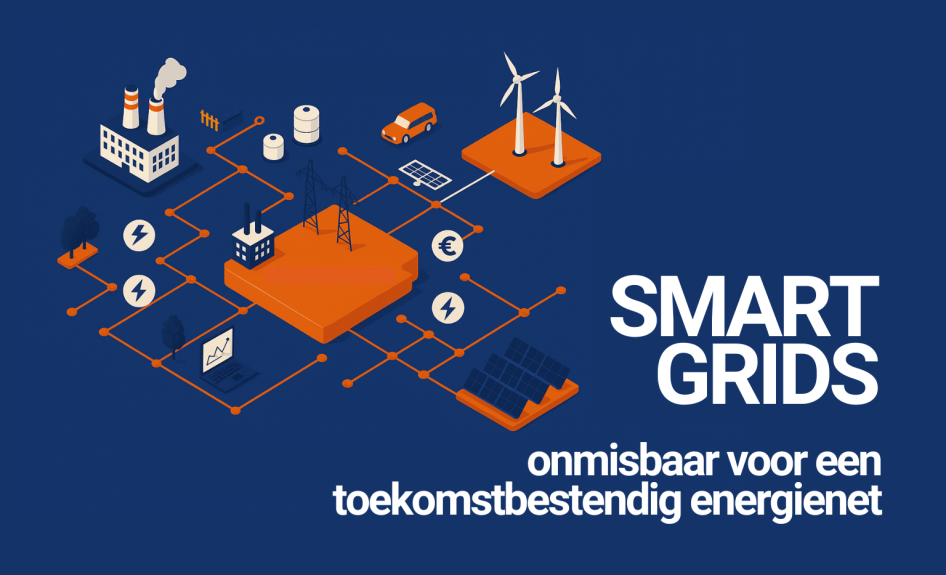
The future of smart grids
The energy transition is in full swing. We are using more and more renewable energy, such as solar and wind. But that also creates new challenges: the electricity grid is becoming overloaded, and power consumption is becoming less and less predictable. How do we ensure that our energy grid remains future-proof? Smart grids are the solution. They are smart networks that better coordinate supply and demand.
What is a smart grid?
A smart grid is an advanced energy network that uses digital technology to distribute electricity efficiently. It provides a solution by making the electricity grid more intelligent and flexible. Whereas the traditional grid focuses primarily on transporting energy from a power plant to homes and businesses, a smart grid enables two-way traffic between producers and consumers. This means that energy is not only supplied, but can also be delivered back, for example by solar panels on a roof.
A smart grid consists of a network of devices, sensors and a meter that constantly collect data and communicate with each other. Advanced software and algorithms are used to process and analyze information. Based on this information, the smart grid can make decisions. These include optimizing the distribution of energy, automatically adjusting when there is a lot or, on the contrary, little energy available. As a result, the network is used more efficiently and we can better deal with peaks in demand or supply.
Why are smart grids important?
- Better use of renewable energy: The sun does not always shine and the wind does not constantly blow. Smart grids allow us to be more responsive to these changes.
- Preventing overload: By cleverly distributing energy, the existing grid is less likely to be overloaded.
- More control over energy consumption: They give users insight into their consumption and costs so they can respond accordingly, saving costs.
What challenges remain?
Smart grids offer many opportunities, but their implementation also brings challenges. For example, digital security is a major concern. A network that constantly exchanges data between plants, households and energy suppliers must be well protected against cyber attacks.
Furthermore, collaboration is crucial. Different components, from charging stations to solar panels and batteries, must fit together seamlessly. This requires clear standards and coordination between governments, grid operators, companies and end users. Only through good cooperation is it possible to get the most out of a smart energy network.
In conclusion
Smart grids help us prepare the electricity grid for the future. They bring balance to the increasingly crowded energy grid, make room for sustainable generation and give users more control over their energy consumption.
For anyone who works or invests in energy, this is a development to take seriously. Whether you're at the drawing board, working in the field or making plans for tomorrow, it's good to think about the role that smart grids could soon play in your work, too.
Consider today what smart grids can mean for your work or daily life.